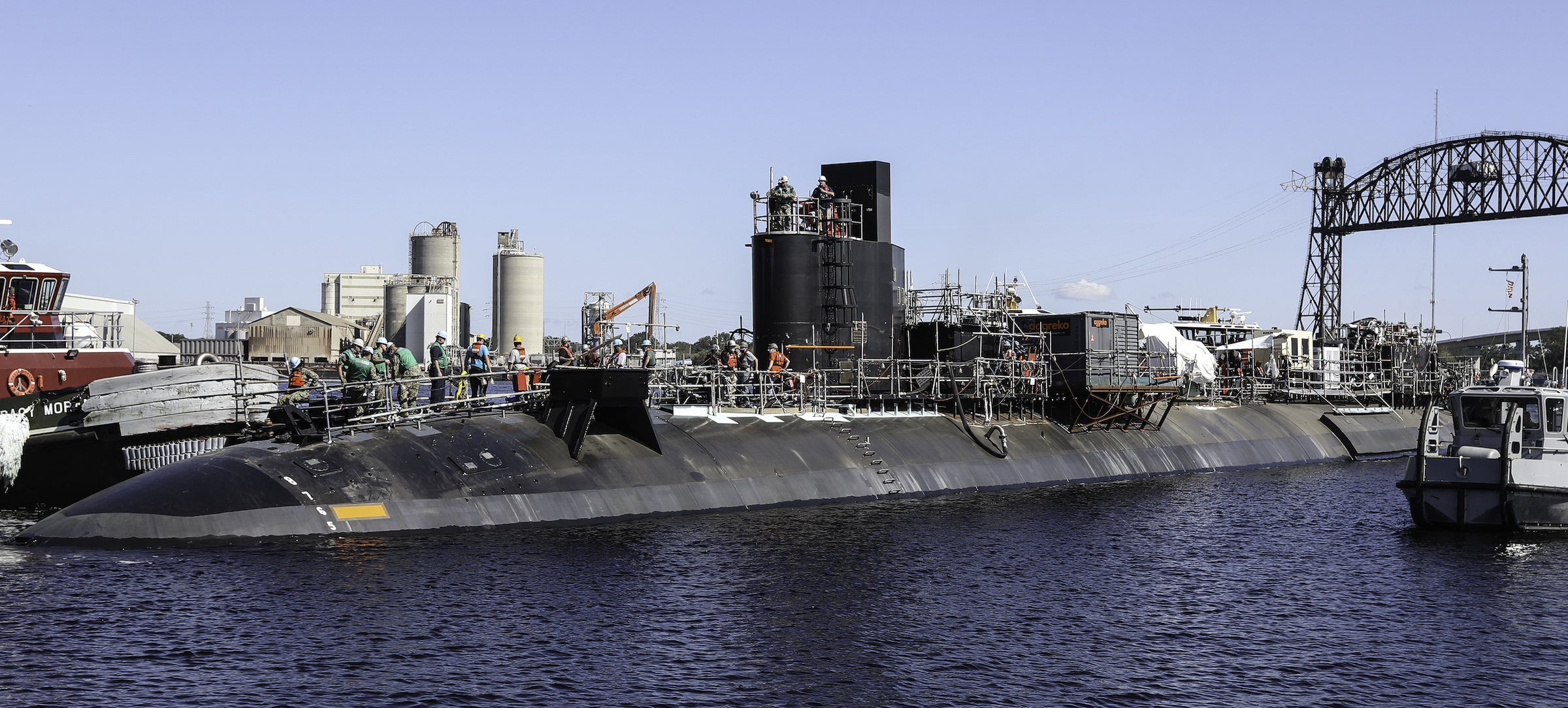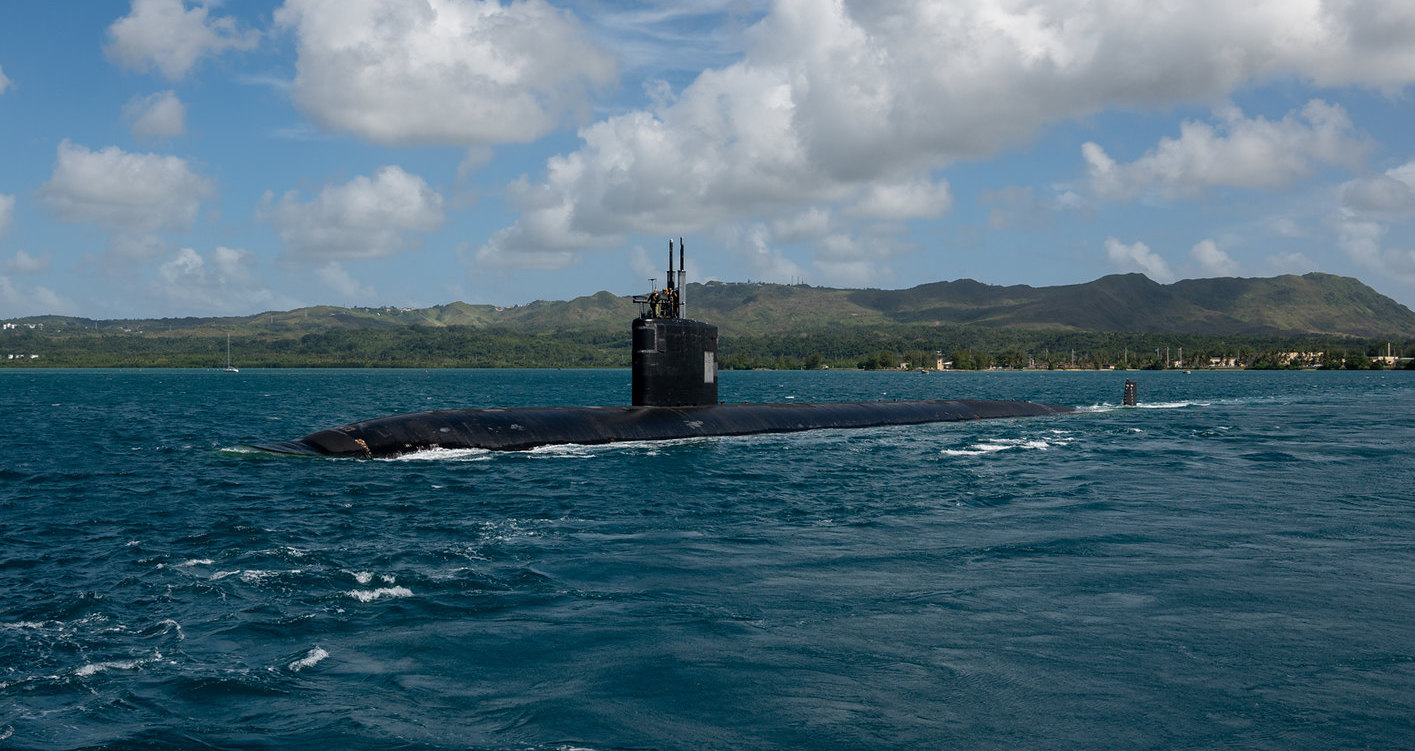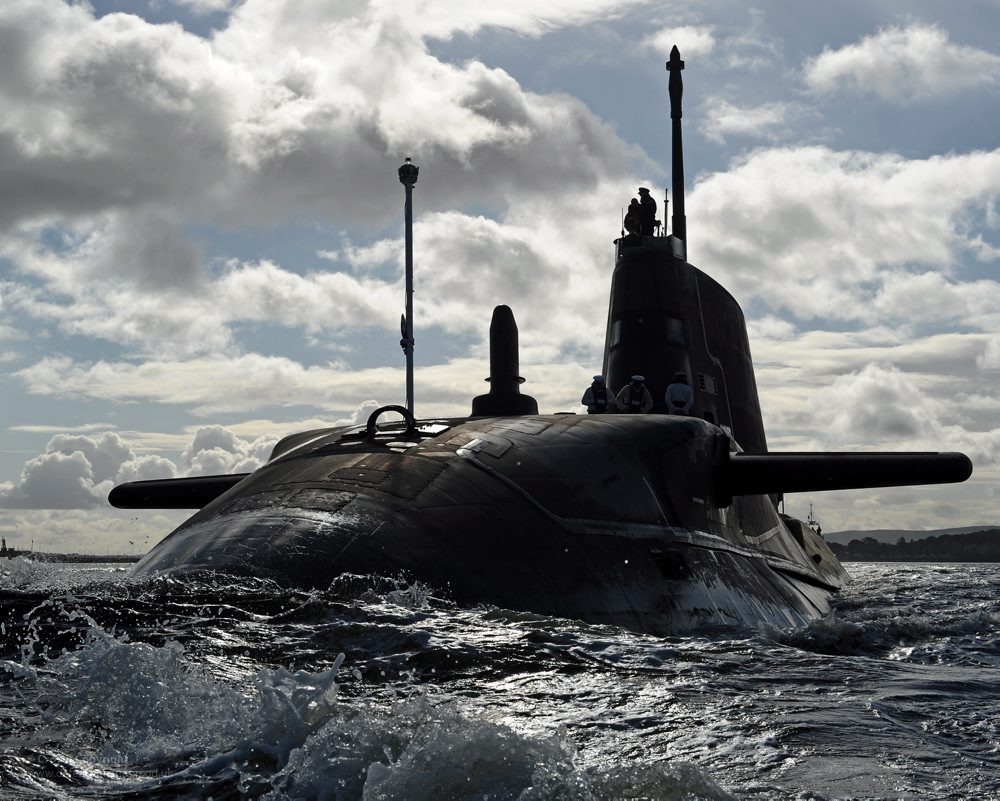The recently signed Australia–United Kingdom–United States defense agreement, or AUKUS, calls for the United States and Britain to share nuclear-submarine technology with Australia. Although the agreement was light on details of what, when, and how, plans apparently are for Australia to eventually build at least eight nuclear-powered attack submarines. In the interim, former Australian Prime Minister Tony Abbott is now advocating for Australia to obtain used nuclear submarines to get the sharing started so as to spin up the Royal Australian Navy’s submarine capabilities and nuclear know-how. Australia has never had a nuclear power plant of any kind.
Speaking last Friday at a Wilson Center event in Washington, D.C., Abbott suggested that, in the short term, Australia should consider leasing or purchasing one or more existing U.S. submarines to develop Australia’s capability to operate nuclear-powered submarines.

Abbott has posed the question, “Might it be possible for Australia to acquire a retiring [Los Angeles] class boat or two and to put it under an Australian flag and to run it, if you like, as an operational training boat?” Abbott added that he’d make a similar proposal for British nuclear-powered submarines “were I in London.”
“It would, in that capacity, be — if you like — an addition to the order of battle in the western Pacific, should that be necessary,” he added.
The U.S. Navy has experience turning Los Angeles-class submarines into floating schoolhouses. This past summer, the ex-USS San Francisco completed its conversion from a nuclear-powered attack submarine (SSN) to a moored training ship, MTS-711, now operating in Charleston, South Carolina. There it joined the converted former USS La Jolla, which began its new life in this training role last year. And while Abbott clearly is calling for a deployable vessel, not an MTS, if two subs were obtained, a moored training ship might be a valuable teaching tool to add.

Potential candidates for such a lease might include: the USS Providence (SSN-719), scheduled to be decommissioned this coming December; and the Oklahoma City (SSN-723), scheduled to decommission in June 2022. Two additional submarines — the ex-Pittsburgh (SSN-720) and the former Louisville (SSN-724) — were decommissioned in April 2020 and March 2021, respectively, but both might be too far along in the disposal process to be diverted and restored. All four submarines are equipped with vertical-launch systems (VLS) for Tomahawk cruise missiles. Pittsburgh and Providence were both commissioned in 1985. Louisville was commissioned in 1986, and Oklahoma City was commissioned in 1988. Two Flight I boats, which lack the VLS and other improvements, also retired in 2021: the Bremerton (SSN-698) and Olympia (SSN-717).
According to SeaPower magazine, the next tranche of “688 boats” to face the breaker’s yard will be: the USS Chicago (SSN-721), Key West (SSN-722), San Juan (SSN-751), and Topeka (SSN-754), in fiscal year 2024. The San Juan and Topeka, which entered service in 1988 and 1989, respectively, are the first of the improved “688i” submarines to be scheduled for decommissioning. The “improved” boats have better sensors and quieting technology, and, most notably, moved the dive planes from the sail to the bow, into which they can retract.
Britain has retired four of its seven Trafalgar class attack submarines. A fifth, HMS Trenchant, has been laid up since March, but is not yet officially decommissioned. HMS Talent received a significant upgrade in 2018, and Jane’s reported in March 2021 that the boat would be extended one year beyond its previously announced 2021 retirement, while the final sub in the class, HMS Triumph, would get an 18-month reprieve beyond its planned 2022 retirement. Both extensions were reportedly caused by delays in the follow-on Astute class.

It is not known what anticipated life is left in the nuclear fuel and reactors on any of the U.S. or U.K. boats, but it seems probable the submarines would require major work in that area. Refueling and overhaul (ROH) is an extremely expensive endeavor that requires the submarine’s hull to be cut open. During the refueling process, the ship’s systems are upgraded and overhauled as well. Considering the limited options, this could be necessary under such a near-term procurement scheme.
The good news is that there is a well-established process in place to do it, although extending the submarine’s life beyond what has been realized in the past is another factor to contend with. On the other hand, finding dry dock time and the resources for ROHs for the Los Angeles class boats outside of those already planned would be challenging. And the rules for transferring a nuclear-powered vessel to a foreign power are uncharted waters.

There has already been an appalling backlog of maintenance for America’s submarine fleet. The USS Boise (SSN-764), for example, has been waiting its turn for maintenance since fiscal year 2016. Making time for an allies’ needs, on top of the Navy’s growing demands, could become a major issue. The Congressional Budget Office already estimates that the U.S. submarine fleet’s “size will exceed the yards’ capacity to maintain it, not only over the next several years but in 25 of the next 30 years.” Still, strategic imperatives could trump these concerns, and the United States might make getting Australia in the nuclear submarine game as fast as possible a top priority.
Australia has expressed interest in building its future nuclear-powered submarines domestically, in whole or in part. This may be just as well, given that General Dynamics’ Electric Boat division is already at or near capacity building submarines for the U.S. Navy, although British builders might be better positioned to increase their output — if they can avoid further delays in the Astute program.
Australia seems likely to base its submarine on a mature design such as the U.S. Virginia class or U.K. Astute class. Given the long lead time for building such complex and specialized warships — not to mention creating the infrastructure necessary to do so — many analysts think it could take until 2040 or later before the first new nuclear-powered submarine enters Royal Australian Navy service. This makes Abbot’s suggestion of buying or leasing an existing sub or two intriguing, to say the least.

Abbott, a member of the Liberal Party, is a former prime minister who served from 2013 to 2015 — coinciding with the rise of Xi Jinping in China — the same party as current Prime Minister Scott Morrison. While Abbott is not a member of the present Australian government, it seems unlikely he would speak openly about the submarine proposal without at least an informal blessing of Australia’s Foreign and Defence Ministries, which are both headed by fellow Liberals.
At the Wilson Center event, Abbott described himself as “like everyone else— until probably the end of 2015, I was a China optimist. We all thought for a long time that China and the West were on … converging paths.” China became the largest customer for Australian exports, he said, but then “weaponized trade against Australia.” And now, he noted, “China is stepping up its intimidation of Taiwan all the time. In the few days before my [early October] visit [to Taiwan], there was something like 150 Chinese warplanes dispatched into the Taiwanese air [defense identification] zones. I expect that [such behavior] will get more intense.”
Abbott was referring to a speech he gave in Taipei on Oct. 7, during which he used remarkably candid language. “Australia has no issue with China,” he said. “We welcome trade, investment, and visits — just not further hectoring about being the chewing gum on China’s boot.”

He went on to add, “Victor Gao, a senior Beijing foreign policy analyst and former translator for Chairman Deng [Xiaoping] directly threatened Australians.‘Do you want to be a target for a possible nuclear war?’ he said, in response to our decision to acquire nuclear-powered but not [nuclear-]armed submarines. So, if the drums of war can be heard in our region — as an official of ours has noted, it’s not Australia that’s beating them. The only drums we beat are for justice and freedom.”
Regardless of the percussion metaphors, it seems Australia may want to consummate its nuclear submarine alliance sooner than some may have expected.
Author’s note: A reader emailed to point out that, while the statement above that Australia has never had a nuclear power plant is correct, the country does have a single nuclear reactor for research and medical purposes. It is not connected to the power grid.
Contact the author: Brian@thedrive.com
